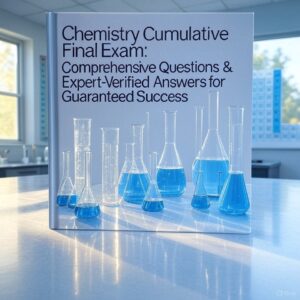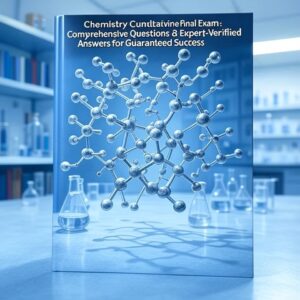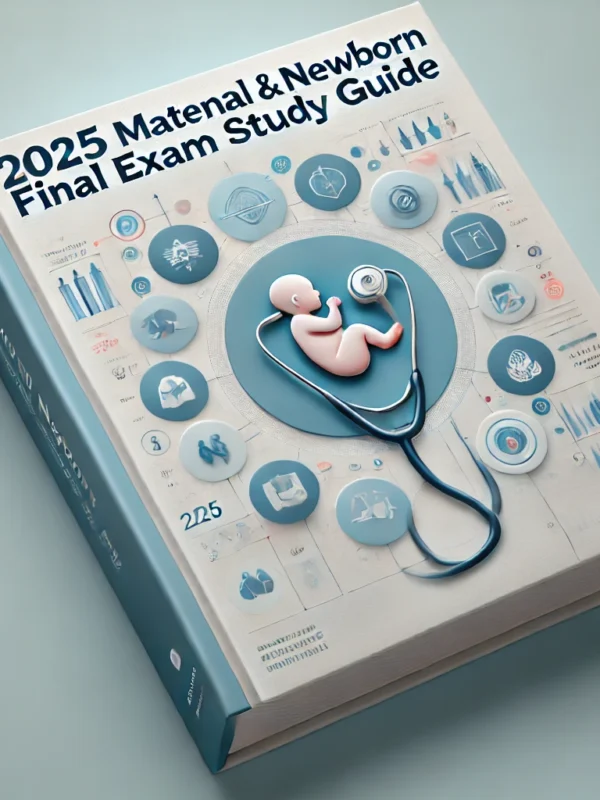-
Comprehensive Questions: Covers all major chemistry topics for a well-rounded review.
-
Expert-Verified Answers: Accurate solutions reviewed by chemistry professionals.
-
Concept Mastery: Helps solidify understanding of fundamental and advanced chemistry principles.
-
Student-Friendly: Ideal for high school and college students preparing for finals.
-
Success-Driven: Structured to boost confidence and ensure exam readiness.
Preview
1. A patient has a temperature of 38.5 degrees Celsius. What is the temperature in degrees
Fahrenheit? a) 101.3 degrees F b) 11.7 degrees F c) 311.0 degrees F d) 70.5 degrees F e)
126.95 degrees F
Correct Answer: a) 101.3 degrees F
Rationale: The formula to convert Celsius to Fahrenheit is: F = (C × 9/5) + 32. Applying
this, (38.5 × 9/5) + 32 = 101.3°F.
2. An example of kinetic energy is _____. a) a coiled spring b) chemical energy c) natural
gas d) running water e) a tree
Correct Answer: d) running water
Rationale: Kinetic energy is the energy of motion. Running water is in motion, thus
demonstrating kinetic energy.
3. The energy associated with the motion of particles in a substance is called _____. a)
electrical energy b) potential energy c) chemical energy d) heat e) temperature
Correct Answer: d) heat
Rationale: Heat is the energy transfer due to the movement of particles in a substance.
4. Which of the following is an example of potential energy? a) a fan blade turning b)
chewing food c) riding an exercise bike d) water stored in a reservoir e) burning wood
Correct Answer: d) water stored in a reservoir
Rationale: Potential energy is stored energy due to an object’s position. Water in a
reservoir has stored energy that can be released.












Reviews
There are no reviews yet.